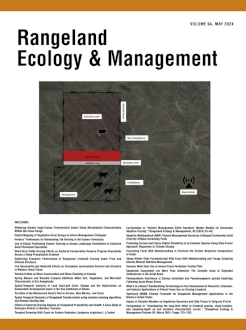Demographic studies suggest that mortality of emerging bunchgrass seedlings limits restoration success across North American cold desert rangelands, but how variation in seedling resilience to ecophysiological stress contributes to this is unclear. We measured light-saturated photosynthetic rate (Asat), apparent CO2 assimilation quantum yield (ΦCO2), and light-adapted PSII yield (ΦPSII) of seedlings from two native perennial bunchgrasses (Elymus elymoides, Pseudoroegneria spicata) during and in recovery from acute water stress (6% soil moisture). All seedlings of both species survived the 14-d dry-down and recovery, and both had ∼95% reduction in Asat and ΦCO2 by day 3 of the dry-down but had divergent recoveries from the acute water stress. E. elymoides took a single day to recover Asat and ΦCO2 to prestress levels, while it took P. spicata 6 d to have 50% recovery from acute water stress. Especially notable is that after reduction in ΦPSII on d 7 of the dry-down, E. elymoides recovered within 1 d at a lower ΦPSII compared with pretreatment, while P. spicata had an additional 1-d lag in ΦPSII recovery. These results suggest that E. elymoides (Turkey Lake germplasm) seedlings are more physiologically resilient to acute water stress than P. spicata (Anatone germplasm), which has implications for restoration planning and native plant breeding.
How to translate text using browser tools
17 May 2024
Photosynthetic Resilience of Elymus elymoides and Pseudoroegneria spicata Seedlings Following Acute Water Stress
Rory C. O'Connor,
Victoria G. Fox,
Erik P. Hamerlynck
ACCESS THE FULL ARTICLE

Rangeland Ecology and Management
Vol. 94 • No. 1
May 2024
Vol. 94 • No. 1
May 2024
Apparent CO2 assimilation quantum yield
chlorophyll fluorescence
Ecophysiological traits
Great Basin
Light-adapted PSII yield
photosynthesis




